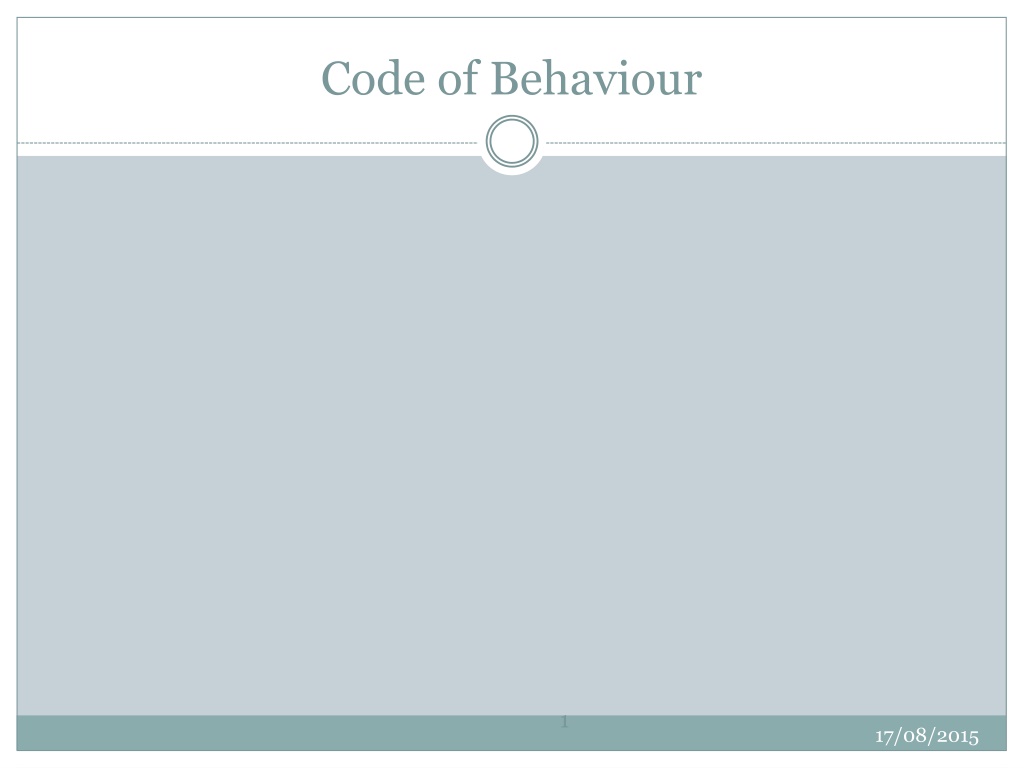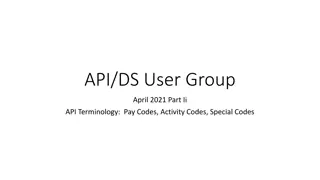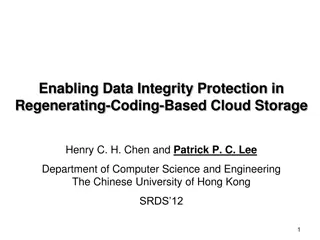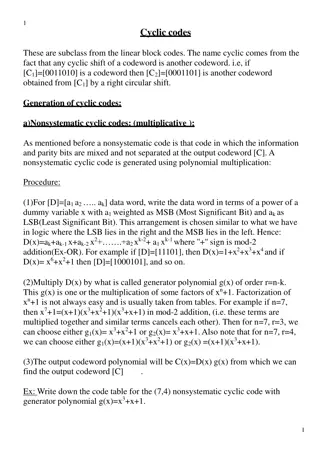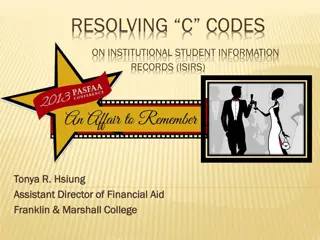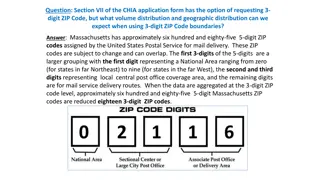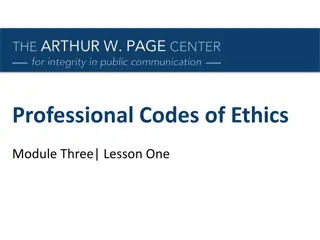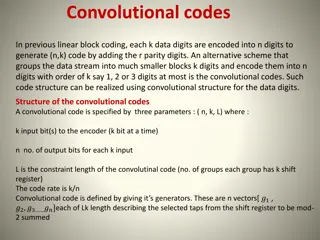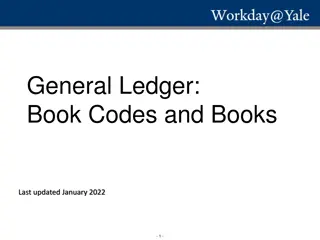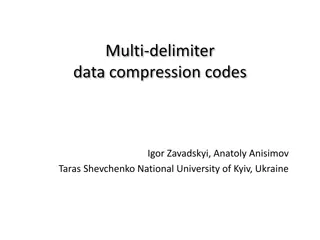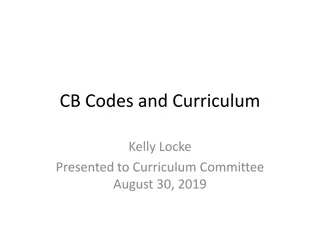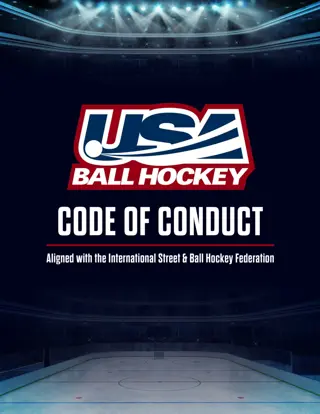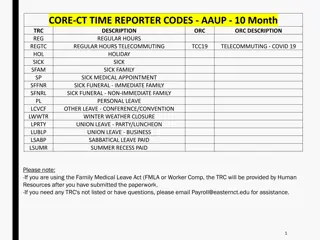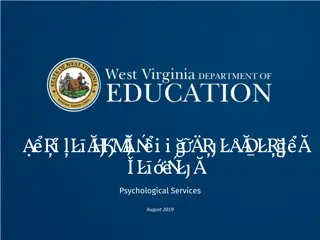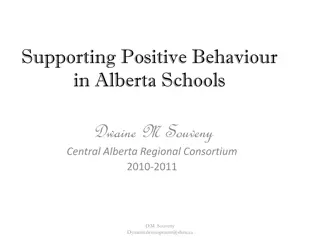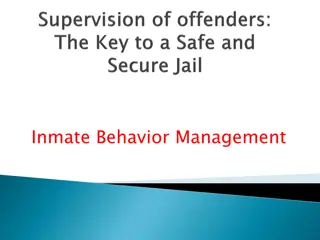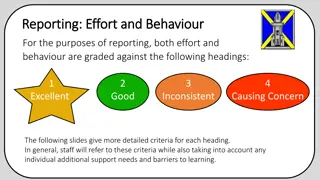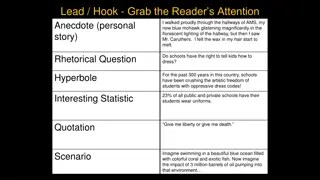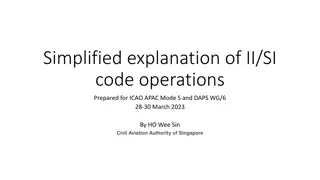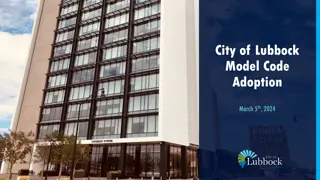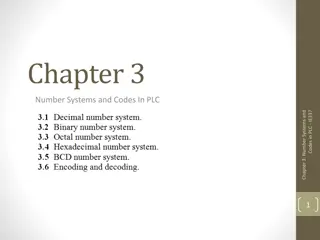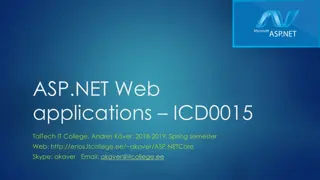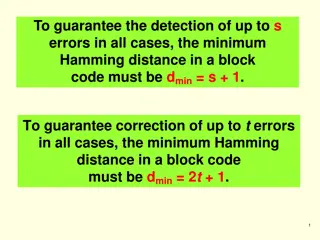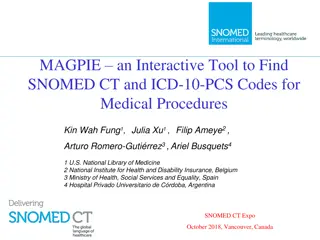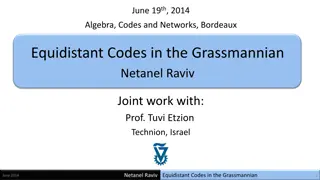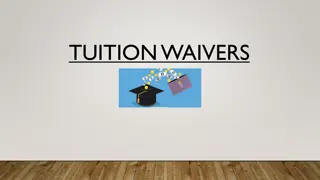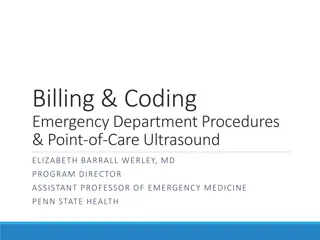Guidelines for Developing and Implementing Codes of Behavior in Schools
Guidelines for creating and implementing Codes of Behavior in schools as per the Education (Welfare) Act 2000. Emphasizes the importance of promoting positive behavior, outlining standards, measures, procedures, and objectives to support student learning and wellbeing.
Download Presentation

Please find below an Image/Link to download the presentation.
The content on the website is provided AS IS for your information and personal use only. It may not be sold, licensed, or shared on other websites without obtaining consent from the author. Download presentation by click this link. If you encounter any issues during the download, it is possible that the publisher has removed the file from their server.
E N D
Presentation Transcript
Code of Behaviour 1 17/08/2015
Code of Behaviour 2 The Board of Management of each recognised school is required to prepare a Code of Behaviour for the pupils at the School. Section 23(i) of the Education (Welfare) Act 2000 A Code of Behaviour is essential in promoting positive behaviour among pupils. 17/08/2015
Code of Behaviour 3 A Board of Management of a school is required to prepare a Code of Behaviour in accordance with ay guidelines issued by the National Education Welfare Board (NEWB) now TUSLA) S.23(3) of WEA 2000 The NEWB published Developing a Code of Behaviour Guidelines for Schools in May 2008 These are statutory guidelines 17/08/2015
Code of Behaviour 4 Developing and /or Reviewing/Auditing an existing Code of Behaviour Genuine/organic or Box ticking exercise Safety, Health and Welfare at Work Act, 2005 Health and Safety Statements 17/08/2015
Focus of Code of Behaviour 5 Code is to help to promote The school ethos, relationships, policies, practices and procedures that: encourage good behaviour and prevent unacceptable behaviour The code expresses the: Vision Mission and Values of the school The Code is a key tool in helping to support the learning of every student in the School. 17/08/2015
Content of Code of Behaviour (S23(2) EWA P.3 of Guidelines 6 A Code of Behaviour is to include: The standards of behaviour that shall be observed by each student attending the school The measures (sanctions) that may be taken when a student fails or refuses to observe those standards The procedures to be followed before a student may be suspended or expelled from the school concerned The grounds for removing a suspension imposed on a student The procedures to be followed relating to notification of a child s absence from school. 17/08/2015
Focus of Code to achieve five objectives P.3 of Guidelines 7 Code should address: The standards of behaviour expected in the school The plan for promoting good behaviour The ways in which the school responds to unacceptable behaviour The plan for implementing the Code of behaviour The School procedures for the use of suspension and expulsion 17/08/2015
Auditing/Reviewing an existing Code of Behaviour (Ch.2 pp.12-20 of Guidelines) 8 Summary of any requirements p.20 Undertaking an audit of the code Preparing an action plan, with a timeframe for reviewing and updating the code Implementation of of the action plan Providing staff with time and opportunities to engage in work ono the Code of Behaviour Ensuring that staff, students, parents and other members of the school community are involved in the review and the revision of the Code 17/08/2015
Benefits of Working together on Audit/Review of existing Code (P.12 of the Guidelines, also P.20) 9 Helps to share a common commitment to the values and ethos of the school Gives all the partners in the school community a sense of ownership of the code Creates consensus about the kinds of behaviour and relationships that foster learning Builds a shared understanding of how behaviour affects learning Strengthens positive relationships of respect and trust 17/08/2015
Reviewing the Code (pp 13-14 Guidelines) 10 Four elements Describe what is happening now Evaluate how well this is working Explore and generate options for improvement/development Make a plan for implementing agreed proposals 17/08/2015
Roles and Responsibilities (pp15-16 of Guidelines) 11 List for Patron, Principal, Teachers and other staff members, parents, students Board of Management Responsibility for ensuring that A code of behaviour is prepared in the school Code respects the: Identity Ethos, in particular Values and Culture of the school Overall responsibility for school policies 17/08/2015
Principles underpinning an effective Code of Behaviour (Chapter 3/pp.22-23 of Guidelines) 12 Goals to be achieved include: Creating a climate that encourages and reinforces good behaviour Creating a positive and safe environment for teaching and learning Encouraging students to take personal responsibility for their learning and behaviour. 17/08/2015
Basic Principles (contd) 13 Basic Principles include that: Code providing clarity for all Affirming that everyone s behaviour matters Focusing on promoting good behaviour Recognising that relationships are crucial Recognising educational vulnerability Attending to the welfare of students Attending to the welfare of staff 17/08/2015
Understanding Behaviour (Ch. 4 pp.26-29 of Guidelines p.29 key requirements) 14 Need for a shared understanding of the factors that influence behaviour Shared understanding among staff members Sharing insights about behaviour with parents, with students Learning, relationships and behaviour are inextricably linked Changing behaviour Promoting good behaviour (See Chapter 7) 17/08/2015
Whole School Approach to the Code of Behaviour (Chapter 5 pp.32-34 p.34 key requirements) 15 Using all of the Policies and Practices in the schools to create an ethos that supports good behaviour What is Whole School Approach to behaviour? It includes that: Ethos, policies and practice are in harmony A teamwork approach to behaviour A whole school approach to curriculum and classroom management An inclusive and involved school community A systematic process for planning and reviewing behaviour policies 17/08/2015
Setting Standards of Behaviour (Ch.6 pp.36-39 of Guidelines p.39 key requirements) 16 Means for a school to: Provide clarity for students about the school s high expectations for their behaviour Set goals for students Serve as a s practical tool for teaching and learning Contents and focus of standards Standards signal: Positive values Unacceptable behaviour Using standards to promote good behaviour Modelling the standards Students with special educational needs. 17/08/2015
Promoting good behaviour (Chapter 7: pp42/44) 17 Promoting good behaviour is the goal of the Code School Management and staff should actively foster a school Ethos Policies and Practice that help to promote positive behaviour and prevent inappropriate behaviour Strategies to affirm and promote good behaviour Relationships between students and teachers Use of rewards system - Effective and ineffective use (p.44) 17/08/2015
Responding to inappropriate behaviour (Ch. 8 of Guidelines pp.46-55) 18 Balancing needs - Figure 8.1 on page 47 A problem solving approach figure 8.2 on page 48 Whole School Strategies Levels of intervention Clearly defined roles and responsibilities Bullying and harassment Use of Sanctions Objective of a sanction is to help the student to learn Good practice in the use of sanctions Consistent Proportionate appropriate 17/08/2015
Sanctions (contd 19 School s duty of care Students with special educational needs Applying sanctions in response to behaviour that takes place outside school need for total clarity (See Section 8.7) Key requirements: Responding to inappropriate behaviour p.55 17/08/2015
Implementing the Code of Behaviour (Pages 58-64 - Implementing the Code of Behaviour Ch.9 of Guidelines Key requirements: p.64) 20 Communicating the Code of Behaviour Copy to parents (S.23(4) of EWA 2000 Code of as a Public document (Template for the written Code of Behaviour P.59) Teaching the Code and building students confidence Students in transition SEN students Monitoring behaviour in the school Notification of a child s absence from school 17/08/2015
Suspensions and Expulsions: Legal and procedural requirements (Ch. 10 of Guidelines pp66-68) 21 The Board of Management must ensure that the school has a policy and procedure in place for the use of suspension and expulsion which are in line with the Guidelines that fair procedures are used in suspension and expulsion that the Board of Management and Principal are equipped for their roles in relation to suspension and expulsion 17/08/2015
Application of Fair Procedures based on the Principles of Natural Justice 22 The Board of Management must ensure that the: Right to be heard and Right to impartiality are understood and applied in relation to both the investigation of the alleged misbehaviour and the process of decision-making 17/08/2015
Fair Procedure/Right to be heard 23 Right to be heard means the right to know: that the alleged misbehaviour is being investigated the details of the allegations being made how the issue will be decided the right to respond to the allegations where the possible sanction is of a serious nature, the right to be heard by the decision making body and the right to ask questions of the other party or witnesses where there is a dispute about the facts 17/08/2015
Fair Procedures/the right to impartiality 24 The right to impartiality means: The right to absence of bias in the decision-maker The right to absence of bias in the investigation and decision- making. To absence of bias in the investigation Two types of bias: Subjective/actual Objective reasonable apprehension of bias The right to be heard and impartiality must be applied in practice in the investigation and decision making process 17/08/2015
Suspension (Ch.11 pp.70-78 of Guidelines key requirements for Suspension: p.78) 25 Authority to suspend in a school/college established or maintained by an ETB devolved to the Board of Management by the ETB under S.44(i)(a) of the ETB Act 2013 Delegation of the authority to suspend to the Principal should be made by way of formal delegation arrangement 17/08/2015
Suspension 26 Determining the appropriateness of suspending a student Factors to be considered before suspending a student (p.72) The nature and seriousness of the behaviour The context of the behaviour The impact of the behaviour The interventions tried to date Whether suspension is a proportionate response The possible impact of suspension 17/08/2015
Forms of Suspension (Section 11.4 pp.73-74) 27 Immediate suspension Suspension during a State examination Automatic suspension Inappropriate Use of Suspension Poor academic performance Poor attendance or lateness Minor /breaches of the Code of Behaviour also Rolling Suspension (repeated or series) Informal or unacknowledged suspension (e.g. being sent home for the day) Open-ended suspension (indefinite period S.29 of 1998 Act) 17/08/2015
Procedures in respect of suspension: Right to be Heard/Fair Procedures 28 Inform the student and parents, how it will be investigated and that it may result in suspension. Informed by phone, or in writing depending on seriousness of matter Written notice preferable Parents/Student right to respond before a decision is made or any sanction imposed Meeting with student and parents Procedures in respect of immediate suspension 17/08/2015
Periods of Suspension (pp. 76-77) 29 Normally not more than three(3) days. Guidance from Board to Principal on circumstances which might warrant a suspension of longer than three days Board might authorise the Principal with the approval of the Chairperson of the board to impose a suspension up to five (5) days pending a meeting of the Board Normally a ceiling of ten (10) days on any one period of suspension 17/08/2015
Suspension/Right of Appeal 30 Opportunity to appeal a Principal s decision to suspend to the Board of Management Opportunity to appeal decisions to suspend made by the board of management to the Patron (ETB) Student suspended for a cumulative 20 days in the current school year has a right under Section 29, to appeal to the ETB in the first instance (Section 29(9) of the Education Act 1998 and further to the Secretary General of DES, (where appropriate) 17/08/2015
Implementation of Suspension (pp76-77 and key requirements p.78) 31 Written notification should be issued, specifying: Period of suspension Reasons for suspension Study programme (if any) Arrangements for return to school Appeal to Board of Management/ETB (as appropriate) After Suspension Ends Re-Integration of student Records and reports of investigation and decision-making Reports to Board of Management and NEWB (TUSLA) Review of use of suspension 17/08/2015
Expulsions (Chapter 12 pp80-87 of Guidelines: Key requirements: Expulsion p87) 32 Authority to expel In schools or colleges established or maintained by an ETB the ETB hold the authority to expel An ETB will normally devolve this authority to the Board of Management of the School or College (S.44(i)(a) of the Education and Training Boards Act, 2013) 17/08/2015
Expulsion should be a proportionate response to the students behaviour 33 12.2 The Grounds of Expulsion Automatic Expulsion See for example State (SMULLEN) v DUFFY 1980 and Section 24(5) of the Education (Welfare) Act 2000 right of the BOM to take much reasonable steps as it considers appropriate to ensure that good order and discipline are maintained Determining the appropriateness of expelling a student 17/08/2015
Expulsion contd 34 Factors to consider before proposing to expel a student 6 factors listed (p.82 of Guidelines for details) The nature and seriousness of the behaviour The context of the behaviour The impact of the behaviour The interventions tried to date Whether expulsion is a proportionate response The possible impact of the expulsion 17/08/2015
Expulsion contd 35 See Justice Charleton in City of Waterford VEC and Secretary General of the DES & others. 27th July 2011 (Par 17) Justice Charleton indicated the factors which can be taken into account by a board of management in considering an expulsion it is appropriate to focus on: The behaviour of the pupil and The effect of that behaviour on the school The track record of the pupil up to the point of the precipitating issue or issues Attempts by the school at diverting, correcting or checking the behaviour The merits of whatever mitigation is offered for the behaviour 17/08/2015
Procedural Steps (pp83-86) 36 Procedural Steps (6)of Guidelines where the initial assessment confirms that serious misbehaviour might warrant expulsion A detailed investigation carried out under the direction of the Principal A recommendation to the Board of Management by the Principal Consideration by the Board of Management of the Principal s recommendation, and the holding of a hearing Board of Management deliberations and actions following the hearing Consultations arranged by the Education Welfare Officer (notified by the Board per S.24(i) of the EW Act, 2000) Confirmation of the decision to expel 17/08/2015
Appeals 37 A parent or a student over eighteen years may appeal a decision to expel under Section 29 of the Education Act, 1998, initially to the ETB in the case of a school/college established or maintained by an ETB When the appeal to the ETB is concluded, parents or student over eighteen years may go on appeal to the Secretary General of the Department of the Education and Skills Expulsions for 2011-2012 year Primary 16 Postprimary 136 Source NEWB Report 2011 17/08/2015
Result of failure to comply with Statutory requirements 38 Where a student is suspended from a recognised school for a period of not less than six days the Principal is required to notify the Educational Welfare Officer in writing immediately (forthwith) s. 21(4) of the Act Where the Board of Management is of the opinion that a student of the school should be expelled it must notify the educational welfare officer of this opinion and the reasons for the opinion S.24(i) of the Act A student may not be expelled from a school before the passage of 20 school days following the receipt of the notification by the educational welfare officer (S.24(4) of the Act) In the case of Timothy O Donovan v De La Salle College, Wicklow 2009 (penalty shoot out) [2009] IEHC163 the Principal failed to notify the EWO and the Board did likewise. 17/08/2015
Result of failure to comply with Statutory requirements 39 The Judge concluded that there was a clear breach by the Board of the requirement to engage with the Educational Welfare Officer as required by Sections 21(4) and 24(i) of the Educational (Welfare) Act 2000 until after the decision to expel Mr O Donovan had been made by the Board Judge declared that the decision of the Board to expel the applicant (Mr O Donovan) and the Appeals Committee to uphold the expulsion were made in breach of his statutory rights and granted an order of certiorari quashing (cancelling) the applicants expulsion on the basis of the breach of that statutory duty. 17/08/2015
